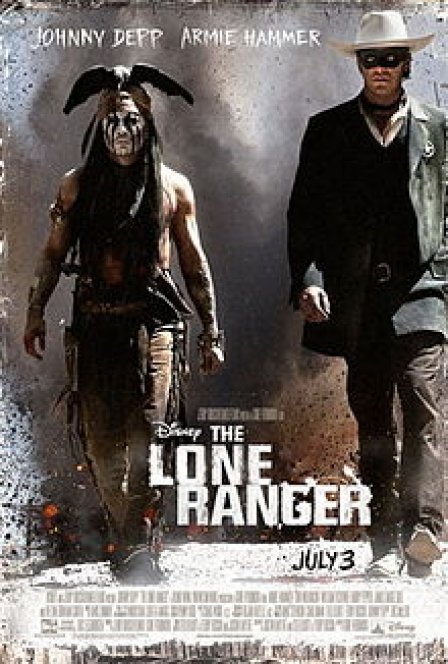The Western, as a genre, is long overdue for a whiz-bang, thrill-a-minute reboot. This was, after all, the style of film that uncorked many a young man’s imagination in decades past. And goodness knows we’ve had plenty of artful reinterpretations of Western themes (The Proposition, the remake of 3:10 To Yuma). Why not bring the awe-inspiring heroics and special effects that Disney threw into the ocean for their Pirates of the Caribbean series?
The Lone Ranger does seem like the right place to start. It has all the elements needed for a proper formula picture: a clean-cut, good-looking hero with a comic sidekick, a black-and-white dichotomy between right and wrong, and plenty of ammo. But even with all that, the filmmaking team behind this reboot bungled it on almost every count.
The chief concern is that there’s really no one to root for here. The modern-day take on the title character is a lawyer, who, following the death of his younger, more accomplished brother, adopts a mask and seeks revenge. But because of his collegiate beginnings, he’s made to look like a fool for almost the entire length of this 150-minute-long affair. He stumbles and falls a lot, sputtering and guffawing through every conversation. For a hero, even a fully human one, it’s embarrassing to witness. Bless poor Armie Hammer for sticking through it all. This sure doesn’t do him any favors as he makes a push for movie stardom.
With The Lone Ranger left behind, we are only left with one good guy who factors throughout the whole picture. And that’s where things get even more troubling. It makes sense why Johnny Depp was handed the role of Tonto. He’s been a nimble comic actor his whole career, starting with his show-stopping work in Cry-Baby. But here, it comes off as strangely offensive. The quiet, sage-like Indian guide is turned into a stooge, veering between moments of intelligence and moments of child-like confusion, all the while mugging for the camera. That sort of shit may work when the character is a drunken sea captain, but when playing yourself off as a Native American, Depp’s acting throughout feels a lot stickier.
That leaves everyone else, a collage of character actors — Tom Wilkinson, Barry Pepper, and Helena Bonham Carter, among them — made up with scars and wigs to give them an “authentic” look. They either growl and eat their dialogue to indicate that they are the baddies or they fade away into the Old West scenery. Give Depp at least some credit: he does leave an impression. Too bad that it wasn’t a more positive one.
Perhaps the most baffling aspect of this movie is its weird anti-capitalist underpinnings. This was a hallmark of the Westerns of yore, pitting nasty industrialists up against the folks who love a simpler life. Here, this idea is amped up to Occupy Wall Street levels of caricature. Wilkinson’s railroad magnate will stop at nothing to expand westward, taking as much profit and power as he can carry along the way. If that means the murder of hundreds of Native Americans, then so be it. If he had a mustache, chances are he would have twirled it.
Rest easy, consumers. As the completely unnecessary expository scenes that take place in the San Francisco of 1933 prove, the West was won by the folks with the biggest bank accounts. The do-good lawman and his trusty sidekick have their moment in the sun, but there’s no stopping progress.

